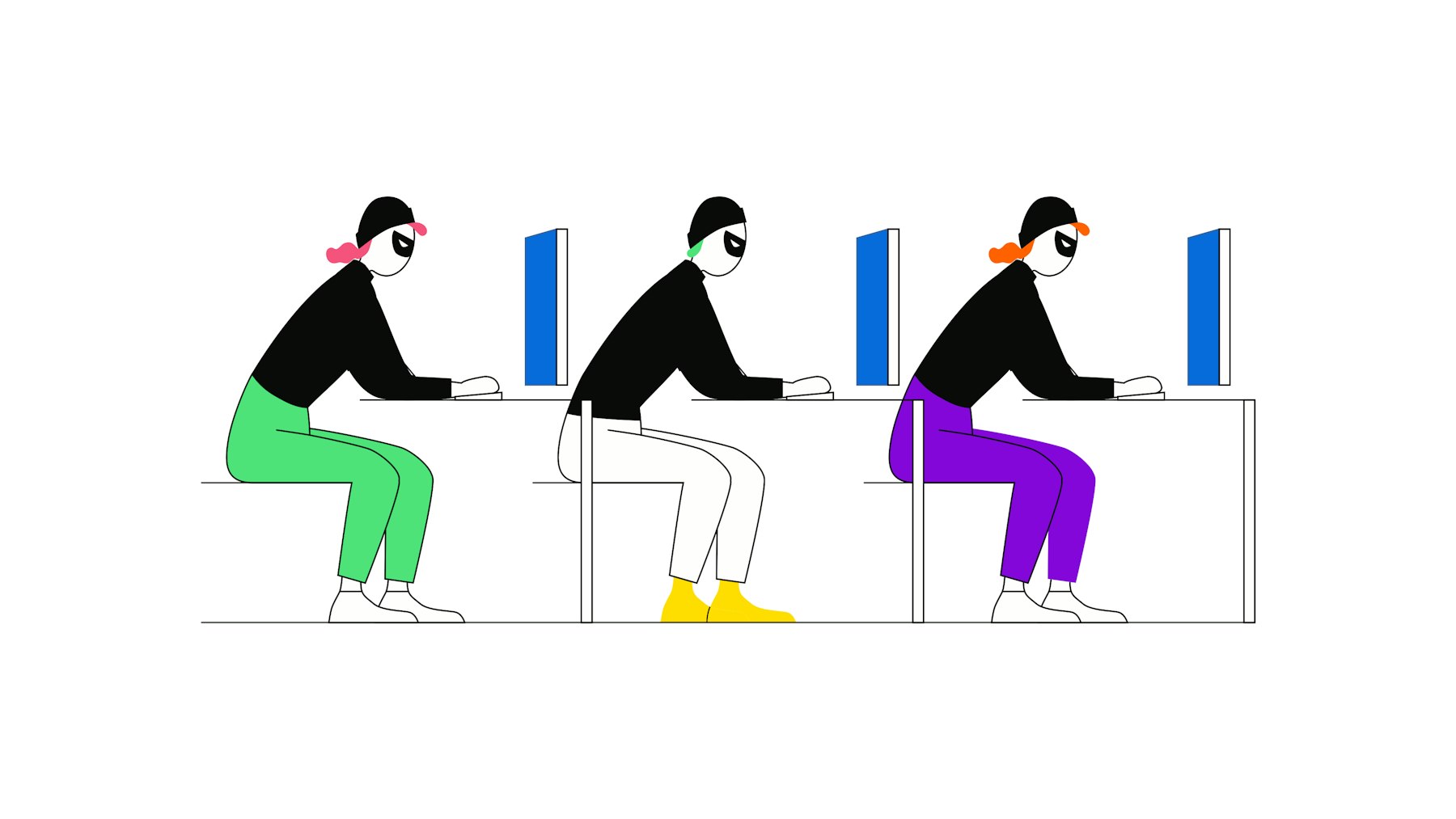What is a 51% attack?
A 51% attack is arguably the most serious threat to blockchains. If such an attack were successfully carried out by a person or organisation, taking control of the majority of the network's mining power (hashrate), the transaction history of the Bitcoin network could theoretically be altered and overwritten.
The decision on which transactions are accepted and which are rejected always requires a majority (i.e. 51%). This means that a majority of 51% could alter the distributed database of the blockchain. Thus, double spending—the multiple use of the same transaction—would be possible. However, it's very unlikely that such a scenario would actually occur.
Can Bitcoin be shut down or switched off?
A 51% attack on Bitcoin has never been successful, nor has the network ever been shut down, not even for a brief moment. Moreover, numerous authorities and banks have repeatedly called for the shutdown of the Bitcoin network. Each time unsuccessfully, as Bitcoin has been running uninterrupted for almost ten years.
For a total system failure of the Bitcoin network to occur, several things would have to go wrong. Here are some "doomsday scenarios":
If power were to fail worldwide, shutting down the internet and all communication channels, the nodes in the network could no longer communicate with each other, and the entire Bitcoin network would be shut down.
A Bitcoin update contains a harmful bug that, despite thorough testing and peer-to-peer network verification in the Bitcoin protocol, remained undetected. The network would likely crash for a short time. This could lead to a drastic drop in Bitcoin's price and a fork of the blockchain.
Bitcoin is decentralised and therefore theoretically cannot be banned by a single government. In the past, however, attempts have been made to ban cryptocurrencies or restrict their use. Since a single government alone can't do much, multiple governments could join forces to push through a ban on cryptocurrencies. However, it's much more likely that governments will enact laws to protect investors and tax regulations.
The 51% attack represents a, albeit unlikely, but still serious threat. However, for such an attack to be successful, not only would a majority of 51% of network participants be required, but also enormous investments in mining equipment. Aside from these factors, it's highly unlikely that such a majority would actually come about, as network participants would also be jeopardising their own profits.
Furthermore, new and supposedly improved cryptocurrencies are introduced to the markets almost daily. Such developments carry the risk of market fatigue in investments. This means that if all investors have bought an asset, there are no more buyers to whom they can sell, even if they want to, leading to a price drop.
Bitcoin has been functioning smoothly for almost ten years and will continue to maintain both its reputation and value.
Why are Bitcoins stolen?
Most cryptocurrency thefts affect users and websites that don't take the proper precautions in storage. Usually, coins are stolen that were stored in places where they weren't secure.
The Mt. Gox hack is perhaps the prime example of inadequate security measures and the largest theft of cryptocurrencies. Mt. Gox was a cryptocurrency exchange founded in Japan and converted into a Bitcoin exchange in 2010. Due to a lack of security measures, over 850,000 BTC were stolen. The Mt. Gox hack is the largest hack since the inception of Bitcoin and led to the exchange's bankruptcy in 2014.
Fortunately, other exchanges around the world have learned from this incident and have since kept their security measures up to date.
Notable cryptocurrency hacks
In recent years, numerous crypto platforms, bridges and exchanges have been hacked, with billions of dollars in cryptocurrencies stolen. Here are some of the biggest hacks that have shaken the industry.
Poly Network
In 2021, Poly Network, a platform for cross-chain transfers, fell victim to one of the largest crypto hacks in history. An attacker exploited a security vulnerability and stole tokens worth over $600 million. Surprisingly, the hacker returned a large portion of the stolen assets.
Ronin Network
The Ronin Network, used for the blockchain game Axie Infinity, was hacked in 2022 through a vulnerability in the validator structure. The attackers, allegedly from North Korea, stole around $620 million in Ethereum and USDC—one of the largest hacks of all time.
Binance
In 2019, Binance, one of the largest crypto exchanges, was compromised through a coordinated attack. Hackers used phishing and malware to steal API keys and 2FA codes. Around $40 million in Bitcoin were lost, but Binance reimbursed affected users for the losses.
FTX
Following the collapse of the crypto exchange FTX in 2022, a mysterious hack occurred. Unknown individuals stole around $400 million from the insolvent platform's remaining wallets. To this day, it's unclear whether it was an external attack or insider fraud.
Mt. Gox
One of the most well-known hacks occurred in 2014 when Mt. Gox, then the largest Bitcoin exchange, was attacked. 850,000 Bitcoin (worth around $450 million at the time) disappeared. The incident led to the exchange's bankruptcy, and affected users are still fighting for compensation today.
Coincheck
In 2018, the Japanese exchange Coincheck fell victim to a hack in which around $530 million in NEM tokens were stolen. The attackers exploited a vulnerability in the platform's hot wallet. Coincheck partially compensated its users.
Nomad Bridge
In 2022, the Nomad Bridge, a protocol for cross-chain transfers, was attacked due to a faulty code implementation. Hackers stole almost $200 million—the unique aspect: many attackers simply copied the original exploit transaction to enrich themselves.
Bitmart
Bitmart was compromised in 2021 through an attack on hot wallets. Hackers stole around $200 million in various tokens by compromising private keys. The exchange compensated affected users to regain trust.
Bybit
Bybit itself hasn't been directly hacked so far, but phishing attacks and fake websites have repeatedly caused users to lose assets. Users should therefore always ensure they're logging in only through the official Bybit domain.
